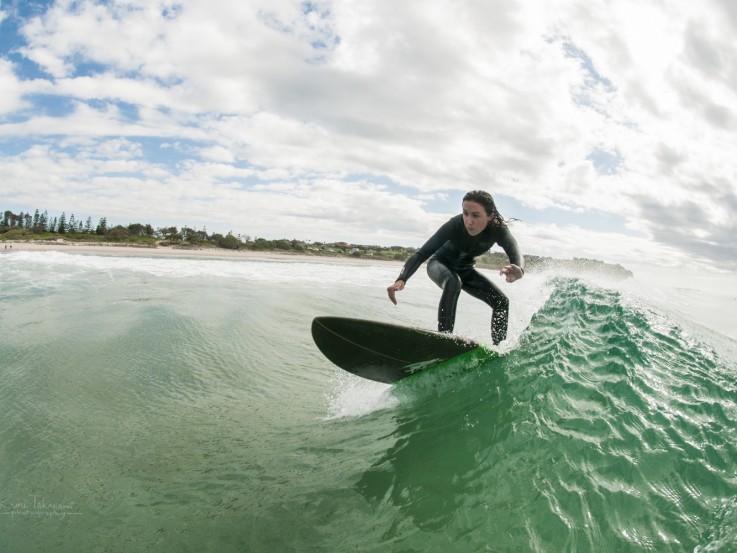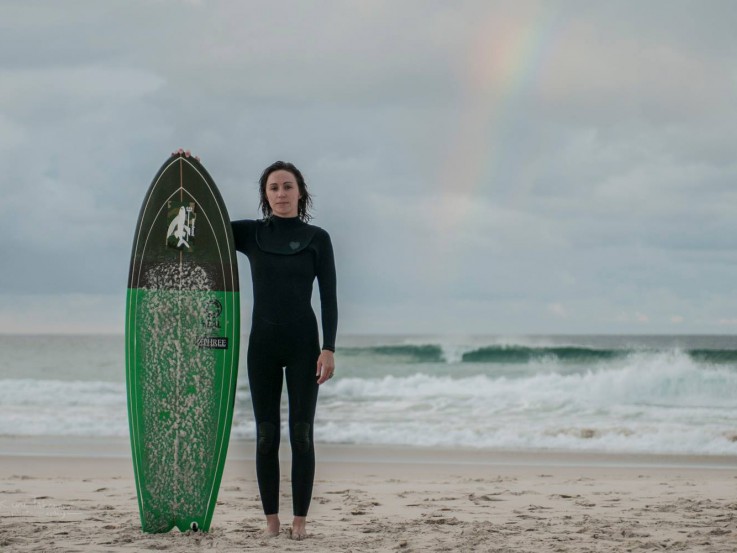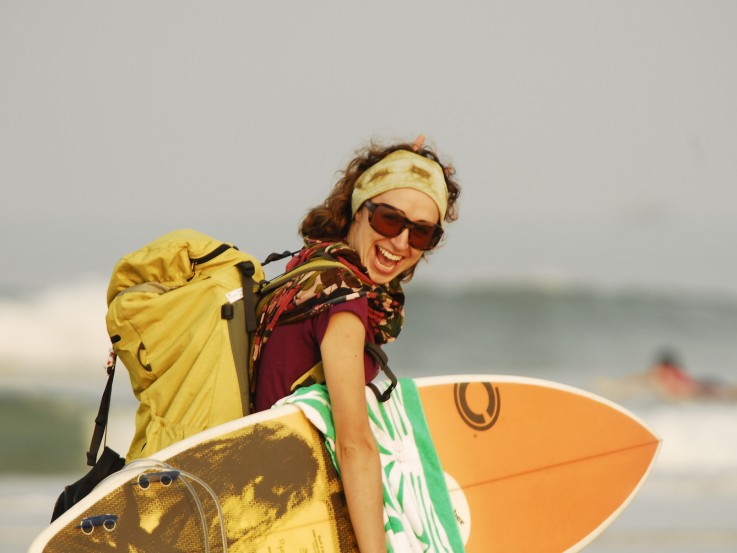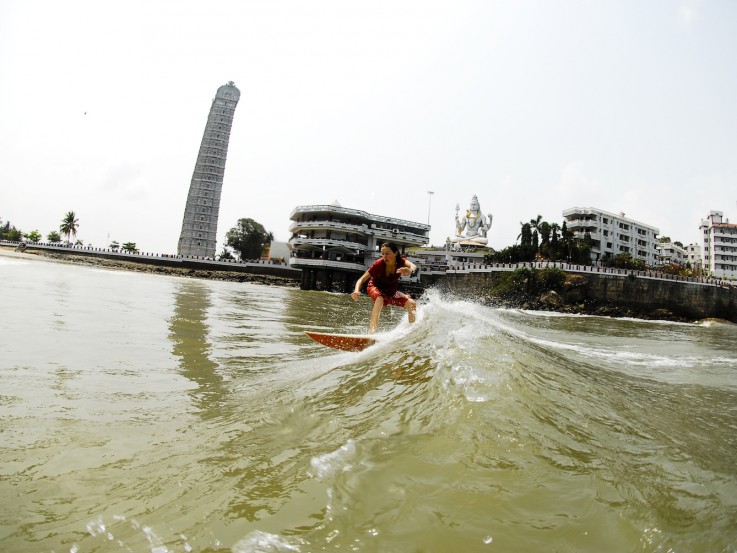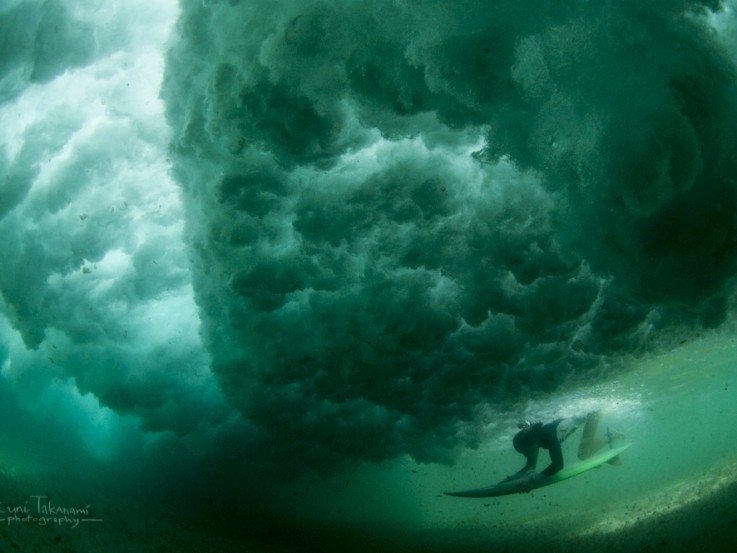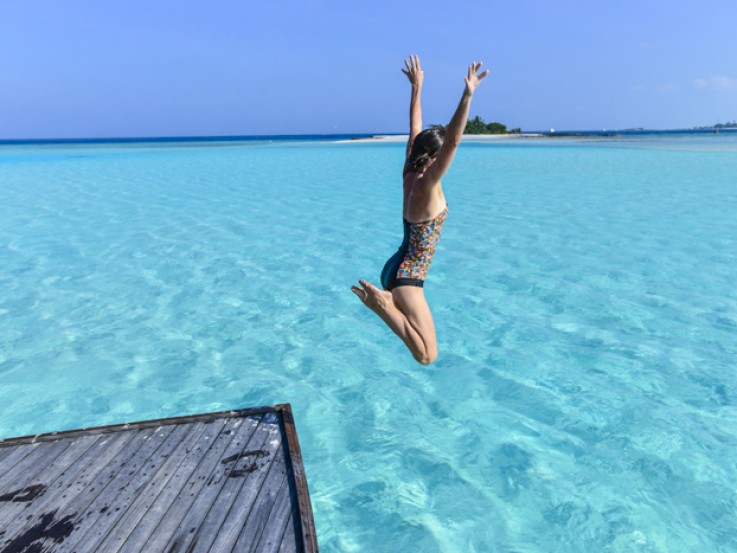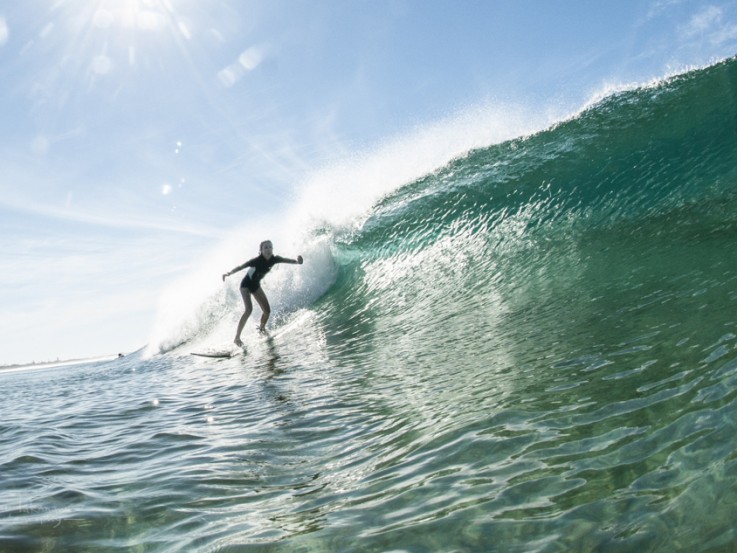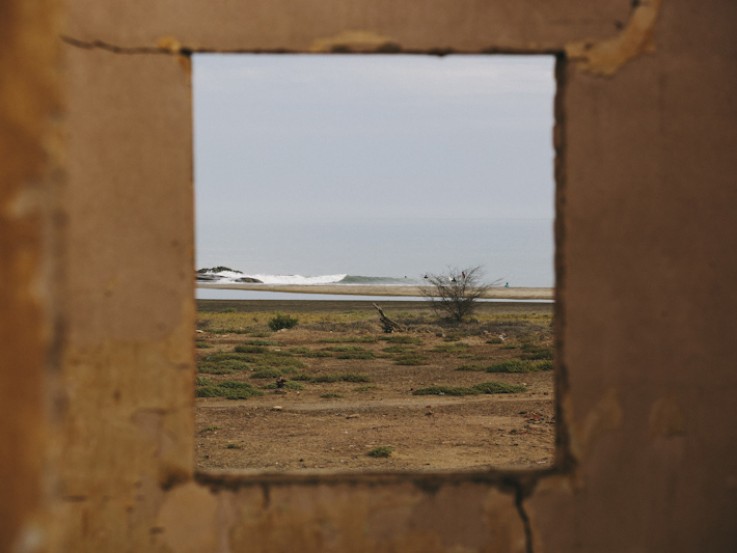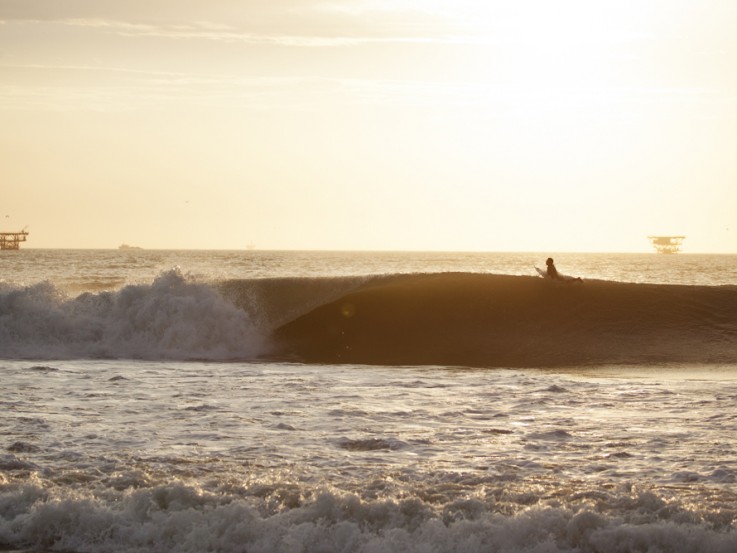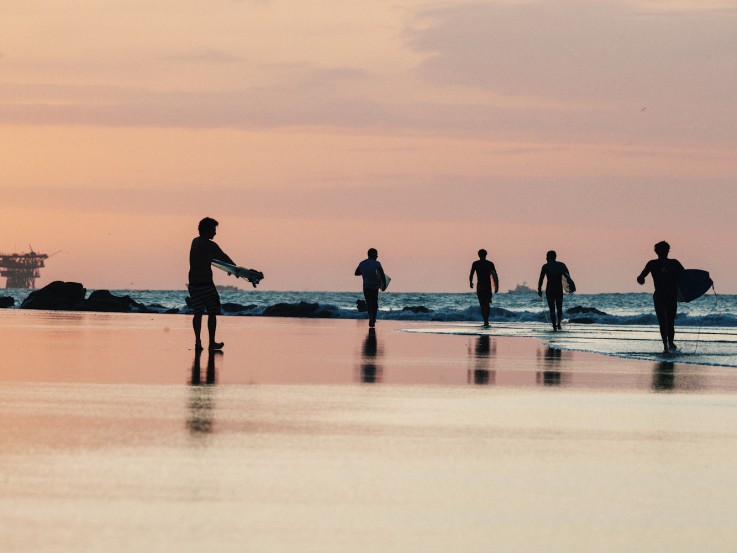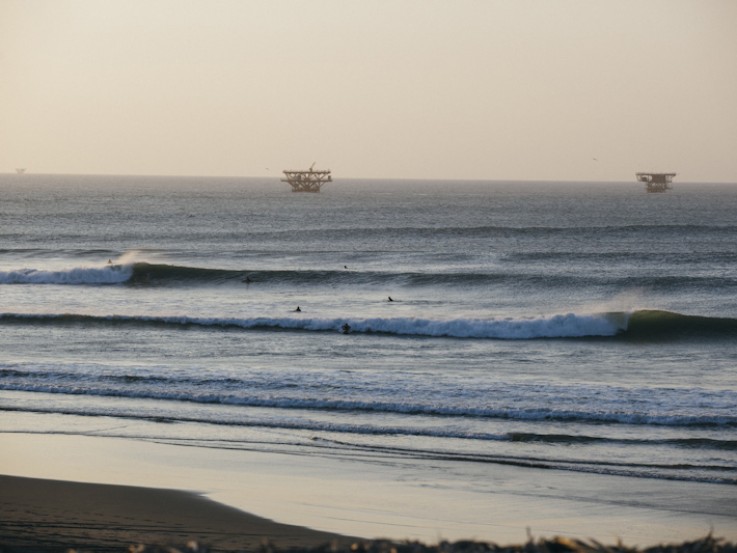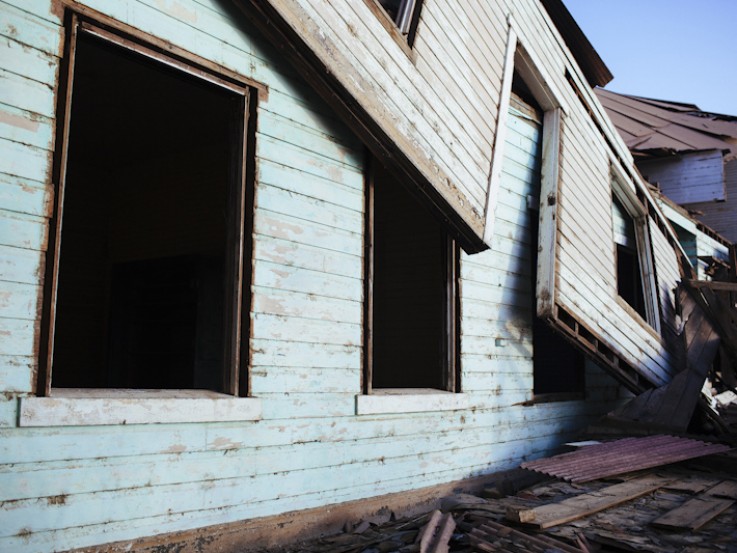Angie Takanami - Editor/Producer
What is it that you love about surfing and the ocean?
I love that surfing can empower communities, and I think John Witzig was on the right note all those years ago when he started Tracks Magazine in believing that surfers were going to be the answer to modern man’s destruction of the environment. Surfing and ecology goes hand in hand, and I think there is a beautiful pull back to simplistic living and the origins of surfing that are going to have a profoundly positive effect on our oceans and our kids’ futures.
Do you have a session that stands out as your most memorable?
Every session is pretty special, especially at some of my favorite secret left spots back home in SA, but most recently I would have to say my first session at Chicama in Peru. It has been a dream, as a goofy footer, to surf long reeling perfection at Chicama and I finally got to do it. I was pretty unfit on that recent trip, still just getting back into surfing after having the kids and working full time, but that session was the inspiration to get back into surfing and it brought back every reason why I surf. The waves are just so long and perfect, and I was traveling with Harold who is the star of the film I am making and we were just going wave for wave laughing and having a blast. The power of the Peruvian land meeting the sea at Chicama is very strong and spiritual, and to have that with great waves, good company, and no-one else in the water…you never forget that for the rest of your life.
What kind of education have you had?
I was very fortunate to have a solid education, going to a private school in South Australia and encouraged to go to University. I was not really sure what I wanted to study but I had a great interest in world affairs and a burning passion to travel and save the world, so I ended up with a degree in International Politics with a double major in Asian Studies and Japanese. After moving to Japan, I started to move toward my dream of traveling and writing and using the media to make a difference in the world, but never dreamed I would end up being able to combine this with the surf industry. I met my husband Kuni Takanami in Japan and he was a professional surf photographer, so it was a natural collaboration that we would move into surf journalism. After a couple of years in the mainstream surf media we grew pretty discontent with the contest scene in Japan, so flipped everything over and set off for India to document a 26-page feature on surfing in India and how travel and surf can empower communities.
You seem to be a bit of a 'jack of all trades'. Can you give us a quick rundown of the work you're doing at Switchboard Media and as a freelancer?
What about Lotus Bazaar, can you give us an insight into what you guys are doing there?
Lotus Bazaar is a non-profit webshop that I soft-launched this year and have just signed on my good friend as manager, Celia Galpin, who is also a great photographer, so we can really grow the shop in the second half of the year. The idea was to create a platform where I can sell and promote handmade, organic, or small-scale produced products from all over the world, geared at women. On my travels I have met some amazing craftspeople, from weavers to jewelry makers to handmade wetsuit businesses run by two people. I think it is critical that we support these small villagers and locals rather than buying mass-produced goods that have short life spans, in order to move toward a more sustainable future and help to eradicate poverty around the world.
Can you tell us a little bit about the Double Barrel project and how the idea came about?
I was recently invited on the first ever surfing press tour of Peru and Harold Koechlin was my guide. Harold took me all up the north coast of Peru surfing and learning about Peruvian culture and history for two weeks, and as I said above about my surf at Chicama, I fell in love with the country and the waves. Peru is a very special place blessed with world-class surf and incredible people, yet the north coast is dominated by a dying oil industry, environmental problems, an imbalance of rich and poor and poorly managed land claiming.
As a surf traveller, I definitely want Double Barrel to be an enjoyable, inspiring surf travel film at the core, with a strong environmental twist. Tim and I have plans to make it very cinematic, and to really inspire surfers to engage in their travels so they don’t just go places to surf, but give back to the communities they visit. The film will look at the history of the oil in Lobitos, the rise, the fall, the recovery and the associated challenges and current environmental problems. The aim is to raise awareness so that the film can support the fund raising for The Lobitos Project and ultimately encourage other villages around the world to follow suit and become sustainable. And the underlining reason we need to do this is so we can sustain the surf and the ocean, and subsequently a decent lifestyle, for the kids and generations to come.
What has the response to Double Barrel been like so far?
Incredible. The media have been so supportive and we have had donations from all over the world. The Peruvians are so excited about the film as they really care about their waves but I guess have not had the international coverage to help them really do something about the problems, although there are some NGOs doing great things in the north and just from the film’s exposure we have been able to connect with these people and Harold is working together with them on The Lobitos Project. I think the fact that Peru is home to some of the best waves in the world, that are ridiculously consistent, has really helped the film gain momentum – people seem to really want to help protect them from environmental destruction but also from overcrowding, and controlling the growth of the surfing population around Lobitos is something Harold and I are very passionate about and his community project is addressing ways to ensure the waves there do not become full of aggressive surfers.
What is it that you love about the work you do?
At heart I am a roving gypsy who also craves routine. My job allows me to go away for weeks on end, working from my laptop and meeting new people, finding new inspirations, then coming home to my family in Byron Bay and the comfort of a routine filled with organic living, surf, and the flexibility of working from home, the beach, or a local café. My day job is writing travel stories, and at the moment my second full time job is working on this film, which is both creative and challenging and something that will actually impact other people’s lives in a positive way. To be able to call this work is a dream come true. But it’s not really work if you’re having fun, right?
What/ Who inspired you to follow the path you have taken?
Read more about Double Barrel
| Kickstarter: | www.kickstarter.com/projects/692686823/double-barrel |
| Blog: | doublebarrelfilm.tumblr.com |
| Facebook: | www.facebook.com/doublebarrelfilm |
Angie's other sites
Posted by: Matthew Ryan, on June 26, 2014
Categories: Interviews
Latest Posts
Craig Sims - White Horses & Surfing Life Publisher
Luke Kennedy - Editor of Tracks Magazine
Simon ‘Swilly’ Williams - Surf Photographer
Jarra Campbell - the Bondi Alchemist
Greg Gordon - Owner of CR Surf
Shayne Nienaber - Surf Photographer
Alexa Hohenberg - Owner of Still Stoked
Christine Deveney - TapaReef Owner & Creator
Russell Ord - Surf Photographer
Richard Kotch - Surf Photographer
Categories
Interviews
Articles
Videos
Press Releases
Quiz
Archive
December 2018
November 2018
October 2018
September 2018
August 2018
July 2018
June 2018
May 2018
April 2018
March 2018
February 2018
January 2018
November 2017
January 2017
December 2016
November 2016
October 2016
September 2016
August 2016
July 2016
June 2016
May 2016
April 2016
March 2016
February 2016
January 2016
December 2015
November 2015
October 2015
September 2015
August 2015
July 2015
June 2015
May 2015
April 2015
March 2015
February 2015
January 2015
December 2014
November 2014
October 2014
September 2014
August 2014
July 2014
June 2014
May 2014
April 2014
March 2014
February 2014
January 2014
December 2013
November 2013
October 2013
September 2013
August 2013
July 2013
June 2013
May 2013
April 2013
March 2013

